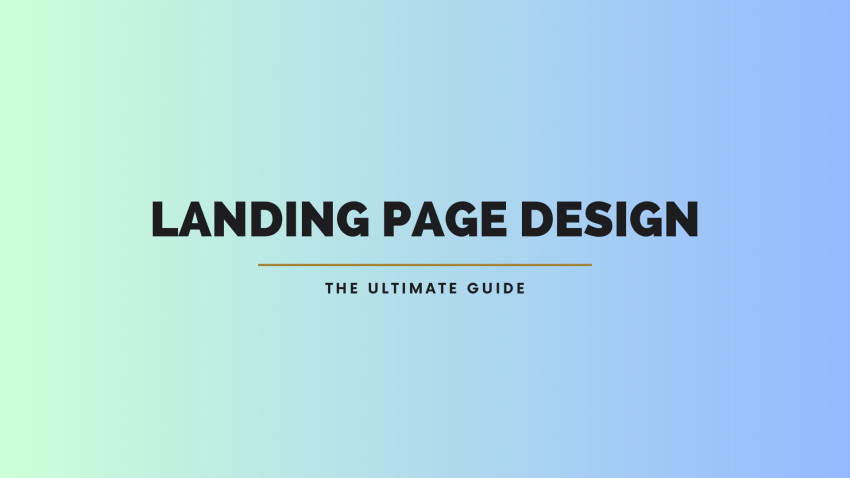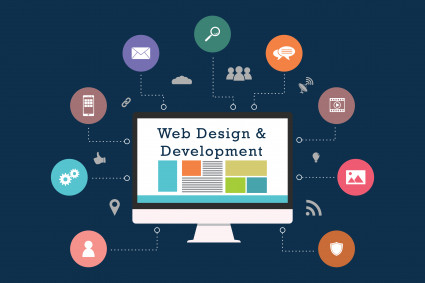
An effective landing page is your digital first impression. This guide explores its design essentials for maximum impact in a competitive online landscape. Whether it's lead generation or product promotion, mastering landing page design is crucial for online success. Join us as we uncover the essentials, empowering you to create compelling digital experiences that deliver results.
What is a Landing Page?
A landing page is a stand alone web page created with a specific purpose in mind, often tied to marketing or advertising campaigns. Unlike typical web pages that serve a variety of functions, a landing page is designed to focus on a single goal, such as lead generation, product promotion, or event registration. The key characteristic of a landing page is its simplicity, directing visitors to take a specific action without distractions.
Importance of Designing a Landing Page
The design of a landing page plays a crucial role in capturing and retaining user interest. A well-designed landing page can significantly impact conversion rates and contribute to the success of marketing campaigns. Here are six reasons highlighting the importance of effective landing page design:
Lead Generation & Conversions
Landing pages are instrumental in capturing leads and converting visitors into customers. By presenting a clear and compelling call-to-action (CTA), a well-designed landing page guides users to take the desired action, such as filling out a form, making a purchase, or subscribing to a newsletter.
Goal-Oriented
Unlike general website pages, landing pages are goal-oriented. They are tailored to achieve a specific objective, whether it's promoting a product, gathering user data, or encouraging sign-ups. The focused design ensures that visitors are more likely to engage with the content and convert.
Landing Page Design Elements
To create an effective landing page, it's essential to understand and implement key design elements. These elements are strategically placed to optimize the user experience and drive conversions.
Above-the-Fold Elements
The section of a web page visible without scrolling is referred to as "above the fold." This prime real estate is where crucial elements like the headline, subheadline, and a compelling image or video should be placed to grab visitors' attention immediately.
Content for Landing Page Design
Compelling and concise content is vital for conveying your message effectively. Use persuasive copy that highlights the benefits of your product or service. Incorporate visuals, such as images and videos, to enhance the overall appeal and communicate information more efficiently.
Conversion Elements
Incorporate elements that guide users towards conversion. This includes clear and prominent CTAs, trust indicators such as testimonials or customer reviews, and relevant forms for collecting user information.
Footer
While often overlooked, the footer is an essential part of landing page design. It should include navigation links, contact information, and any necessary disclaimers or privacy policy links. This ensures users have access to essential information without distracting from the primary CTA.
How to Create a Landing Page Design?
Creating an effective landing page involves a systematic approach that covers planning, design, content creation, and development.
Planning & Research
Define the goals of your landing page and identify your target audience. Conduct research on competitors and analyze industry trends. Develop a wireframe or mockup to outline the layout and structure before moving to design.
Design
Focus on a clean and visually appealing design that aligns with your brand. Pay attention to color schemes, typography, and imagery. Ensure that the design supports the overall goal of the landing page and enhances user experience.
Content
Craft compelling and concise content that resonates with your target audience. Clearly articulate the value proposition and use persuasive language to encourage action. Utilize visuals strategically to complement the written content.
Development
Bring your design and content to life through web development. Optimize for speed and mobile responsiveness to ensure a seamless experience across devices. Test your landing page thoroughly to identify and address any issues before it goes live.
Conclusion
A well-designed landing page is a powerful tool for driving conversions and achieving marketing objectives. By understanding the importance of design elements and following a structured approach to creation, you can maximize the impact of your landing pages. Whether you're promoting a product, gathering leads, or encouraging sign-ups, investing in thoughtful landing page design is an essential component of a successful digital marketing strategy.



